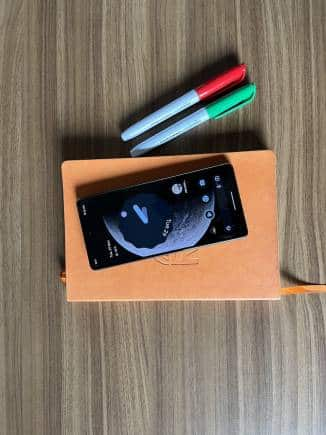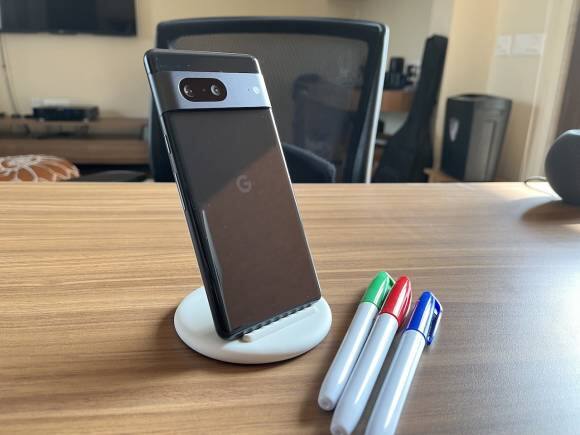


When Google launched, not one, but both of its Pixel phones in India this year, both smartphones went into high-demand mode on Flipkart.
For one, with all the frill-filled Chinese devices launched on a weekly basis, users appreciate the straightforward Android experience of a Google phone.
So strong is that appreciation that they consider it worthwhile sacrificing the extreme maximized hardware specs you could get for this price, Rs 59,999.
And then, there’s that Pixel camera. For the past several generations of the Pixel phone, Google has taken a different approach to cameras and photography, choosing to do with software and AI what others have tried to do with hardware-stuffing. The result has been quite game changing.
For the more advanced computational photography experience, one would need to buy the Pixel 7 Pro at Rs 84,999.
Surprising as it may seem to photography lovers, not everyone needs to fiddle around with multiple lenses or settings, preferring instead to just point and shoot. And that’s something the Pixel 7’s primary camera does more reliably than most, invariably rewarding its user with a clean, bright image with punchy colors.
These two major reasons make the Pixel 7 stand its ground against the army of smartphones available, despite not actually being very different from its previous generations.

The Pixel 7 follows the same design language as the Pixel phones that went before it, and also looks clearly a close family member of the Pixel 7 Pro.
The most distinctive physical feature is the camera bar, dressed in metal and wrapping into the body of the phone itself, which some immediately like and some instantly dislike. Both categories of users quickly forget about it through as they look forward to getting good photographs from the assembly.
The Pixel 7 has one signature colour this time, apart from the obligatory black and white (or Obsidian and Snow) and that’s Lemongrass, a singularly refreshing shade that’s difficult to resist.
The Pixel 7 is the smaller of the two phones with its 6.3-inch screen and so, the one that is easier to grip. While this size used to be considered outlandishly large some years ago, it’s now one of the more manageably sized ones you can get today. It’s safer in a case and those are easily available online.
The bezels on the Pixel 7 are a little thicker at the bottom than those of the Pixel 7 Pro. Somewhat annoying, but only briefly so as this is another element that is entirely easy to become accustomed to. It’s a solid enough build and feels good in the hand.
Some of the elements the Pixel 7 does not have: a physical fingerprint sensor, a dual-SIM tray and 3.5mm jack. It does have stereo speakers and although these are not very loud, they sound deep and pleasant. To round off the Pixel 7’s design, it has Gorilla Glass Victus and IP68 for protection from scratches, water, and dust.

The 6.3-inch 2400 x 1080 pixels per inch OLED display looks nice enough and quite devoid of any display related issues. But tech enthusiasts have one big complaint: the refresh rate for the display is capped at 90Hz when you can get the higher 120Hz refresh feature even on some budget phones these days.
To them, it seems such an unnecessary cut-back. The average phone user will probably not be overly bothered as the screen really is responsive enough and works fine.
We should get another complaint out of the way and this one is more difficult to set aside. The only storage variant available to Indian users is a 128GB and with all the movies and videos users download these days, it can quickly run out. The one saving grace is that the photos are videos shot on the phone are meant to upload themselves on to one’s Google Drive.
As for the rest of the hardware, most notable is Google’s Tensor G2 5nm chip with 8GB RAM to work with. Integrated and optimized with Google’s software, it gives smooth lag-free, fluid performance, even if it isn’t blazingly fast and snappy. Not everyone finds it the right choice for high-end gaming, but the level of performance is well-suited for everyday phone use.
The device doesn’t get unduly warm either, and runs largely trouble-free. There’s also Google’s in-house Titan M2 security chip that works with the Tensor chip to ensure a secure architecture that protects privacy.
The fingerprint sensor on the Pixel 7 is an in-display one and it works well enough. This is again, not as blazingly fast as say, a OnePlus fingerprint sensor, but it does work reliably.
There’s a 4,355mAh battery on this phone. Any larger and it would clash with the intent of having the Pixel 7 retain a smaller than the Pixel 7 Pro. Though it supports 30W fast charging (charger definitely not provided), wireless charging and reverse charging, it’s slower to charge than the Chinese phones around us that can race from zero to 100 in a mere half hour.

It wouldn’t be wrong to think of the Pixel phones as software oriented rather than about maximizing hardware specs. The Pixel 7 Pro runs Android 13 with Google’s Pixel-specific customizations and is mercifully free of unwanted third party apps and notifications.
Android 13 brings a number of fun and useful features that work very well on the Pixel 7 including wallpaper and theming options, live transcribe, and more. Any Pixel is a home for the Google Assistant, and this one is no exception. The phone only comes into its own if a user takes the trouble to explore these features and make them part of everyday usage.
An issue however is that three years of software upgrades and support will be offered and that’s not enough compared with what others like Samsung are offering considering Android belongs to Google in the first place.

The Pixel 7 comes without the telephoto lens and some camera features that its Pro brother has although there is an 8x digital zoom. The ultra-wide lens on this phone is also not the same. But the primary 50MP camera retains its strongest advantage: it with Google’s AI to take over from the user and present reliable shots, which it does quicker than on previous gen phones.
Users can generally be sure they are getting a usable and shareable photograph. The Pixel 7 also has a 12MP ultra-wide lens and a 10.8MP selfie shooter. Both the front and rear cameras can shoot 4K video at 30/60fps and 1080p at 30/60fps. All technicalities apart, the strength of this camera system is consistency and no real work having to be done by the user.
The images you get from the Pixel 7’s main camera are clean and detailed and always bright and light-filled. Hold relatively still while the camera does its job. In fact, the camera app shows the time it will take to capture the shot so one can be prepared to stay still for that period.
The post processing makes sure there are nice looking shots that can be further enhanced in the Photos app. The colors are captured accurately and you have more choice with how an image is to be captured with night mode.
Neither video or selfie shooting is the strength of the Pixel 7’s camera set up. The ultra-wide lens does an adequate job, but it’s the primary lens with computational photography tricks kicking in that make this possibly the best camera for the price.
If you value an unfettered and integrated experience above sheer high-end hardware and want a camera in a handy easy-to-use phone, the Pixel 7 is definitely one of your best choices.

Discover the latest Business News, Sensex, and Nifty updates. Obtain Personal Finance insights, tax queries, and expert opinions on Moneycontrol or download the Moneycontrol App to stay updated!
Find the best of Al News in one place, specially curated for you every weekend.
Stay on top of the latest tech trends and biggest startup news.